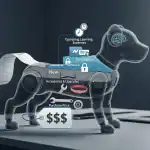8 Factors Affecting Robot Pet Market Costs
Share
Table of Contents
The robot pet market has grown rapidly in recent years, blending emotional companionship with advanced robotics. From lifelike dogs that bark and wag their tails to interactive cats that purr when touched, these creations have found a place in homes, hospitals, and therapy centers. But what exactly drives their price tags? Understanding the factors that affect robot pet market costs can help consumers, investors, and developers make more informed decisions.
Level of Technology and AI Integration
One of the biggest cost drivers is the sophistication of the robot pet’s artificial intelligence. Basic models rely on pre-programmed responses, which are cheaper to produce. However, premium models use machine learning to recognize voices, remember owners, and adapt behavior over time.
Features such as facial recognition, natural language processing, and emotional AI dramatically increase development costs. The more lifelike the pet’s reactions and movements, the more expensive the underlying components and coding become.
Sensors and Motion Components
Robot pets rely on multiple sensors—touch, sound, temperature, and motion—to simulate realistic interactions. Each sensor adds to the total manufacturing cost. For instance:
- Touch sensors allow pets to respond when petted or hugged.
- Gyroscopes and accelerometers enable smooth movement and balance.
- Microphones and cameras help interpret sound and visual cues.
Advanced mobility systems, such as multi-joint legs or servo motors that mimic muscle motion, also increase production expenses compared to static or wheeled designs.
Materials and Build Quality

The materials used in robot pets play a major role in both aesthetics and durability. Cheaper models often use hard plastic shells, while high-end ones employ silicone skin or synthetic fur for a more natural feel.
Premium finishes, waterproofing, or hypoallergenic materials also add to the total cost. These elements not only enhance realism but also improve longevity, making the robot pet more appealing for long-term use.
Software and Firmware Development
Developing the control systems and personality algorithms behind a robot pet is time-intensive and costly. Each behavior pattern—like tail wagging, eye blinking, or vocal response—requires detailed programming and testing.
Continuous updates and firmware improvements further add to post-launch expenses. Developers who provide app integration or cloud connectivity must also invest in servers and cybersecurity measures to protect user data, adding to the long-term cost of maintaining each unit.
Production Scale and Manufacturing Location
Economies of scale play a big role in pricing. Manufacturers that produce robot pets in small batches face higher per-unit costs. Large-scale facilities, particularly in countries with lower labor costs, can produce more affordably.
However, companies that choose to build their products domestically often do so to ensure quality control, ethical labor practices, or shorter supply chains—factors that may increase retail prices but enhance brand trust.
Design Complexity and Customization

Customization options, such as choosing the pet’s color, size, or behavior profile, can drive up production complexity. A robot dog with interchangeable facial expressions, for example, requires more intricate mechanical design and assembly compared to a simple robotic fish or hamster.
Some brands even allow buyers to upload custom voice commands or emotional behaviors, adding a personalized touch that justifies higher pricing.
Target Market and Branding
Brand perception strongly influences how much consumers are willing to pay. Well-known companies like Sony or Tombot can command premium prices based on reputation and marketing.
Similarly, robot pets designed for medical or therapeutic use tend to be more expensive than those aimed at entertainment or education, due to stricter safety and performance standards.
Import Taxes, Distribution, and Retail Margins
Final retail prices are also affected by logistics and regional factors. Import duties, distributor fees, and retail markups can significantly raise prices in certain markets. Imported robot pets may cost more due to shipping and tax expenses, even if the base model is manufactured abroad.
How These Factors Influence Market Trends
As technology advances, the overall cost of producing robot pets is gradually decreasing. However, consumer demand for realism and emotional intelligence keeps pushing manufacturers to invest in more advanced features. The result is a market that balances affordability with innovation—offering entry-level bots for beginners and high-end companions for collectors or therapy programs.
Future Pricing Outlook
In the coming years, modular designs and open-source AI frameworks are expected to reduce production costs. Smaller startups may soon compete with established brands by offering customizable robot pets at mid-range prices. Nonetheless, luxury models with advanced neural networks and lifelike materials will continue to dominate the upper tier of the market.


Our Social Media
Follow Us Follow Us Follow Us